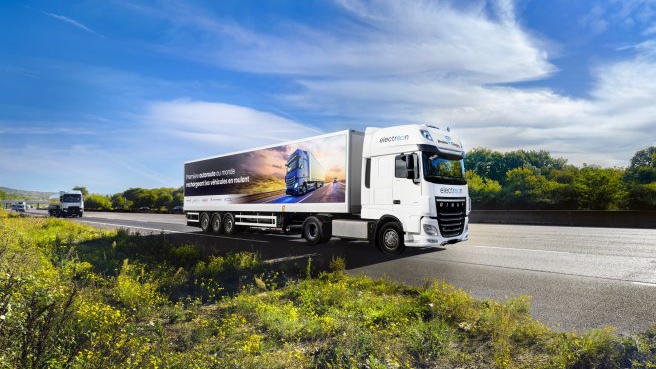- About a kilometer of French road is equipped with induction coils
- The small section is a test bed for trucks, vans, passenger cars and buses.
- Sustained charging speeds of over 200 kW have been reported
A small stretch of motorway on the outskirts of Paris, France, is currently acting as a test bed for the next generation of dynamic vehicle charging, offering charging speeds of up to 300 kW without the need for bulky wires and cables.
As part of the Charge as you Drive project, involving Electreon, Gustave Eiffel University and Vinci (a global mobility infrastructure company), the 1.5 km (just under a mile) section of the A10 motorway has been equipped with sub-surface induction coils, so that those involved in the project can evaluate the performance of the induction charging system.
According to Vinci, the first results have been “very encouraging”, with more than 300 kW of instantaneous power delivered and 200 kW of average power delivered in optimal “steady state” conditions.
The tests, which take place on highways open to the public, currently involve only one truck, one van, one car and one coach, all of which are equipped with the appropriate receiver technology to wirelessly recharge the on-board batteries.
Vinci says that, if deployed on a large scale, inductive charging surfaces could significantly reduce the weight of electric vehicle batteries, as they would not need to be as large to provide the range needed to get from A to B.
On the contrary, as long as the batteries offer enough range to travel to and from these stretches of highway, they could be drastically reduced: “several tons in the case of heavy electric vehicles,” according to Vinci.
As a result, costs, carbon footprint and materials footprint would also be reduced, while charging stops and range limitations, which are costly for fleet operators, would be eliminated.
The French project is the only test in the world currently operating on open highways, but it is not the first of its kind, with bus routes in Germany, taxi routes in Sweden and heavy goods vehicles in the United States undergoing similar experiments to validate the technology.
Analysis: Too good to be true?

Wireless EV charging isn’t exactly a new concept; Some of the first demonstrations of dynamic loading took place as early as 2010.
However, the technology has advanced to a point where it can now be introduced onto public roads on a small scale.
Additionally, Porsche has demonstrated that static wireless charging can be a commercially viable offering, with an 11 kW wireless charging pad now being offered to customers of the upcoming Cayenne EV.
But implementing a network of new roads equipped with induction coils would be terribly expensive, and modernizing infrastructure with this technology would be even worse, especially considering the disruption it would cause.
There’s also no word from Vinci on how expensive the custom wireless receivers were to build and install in an existing EV, assuming they would have to be pretty special to handle the advertised high charging speeds.
Instead of destroying roads and installing expensive induction coils, some parts of the world have managed to decarbonize their public transport systems by using overhead wiring, whether to power trams or to quickly charge electric buses whenever they stop.
Vinci’s vision is to accelerate the electrification of heavy vehicles in the freight and logistics sector, which alone accounts for more than 16% of France’s greenhouse gas emissions, according to Nicolas Notebaert, CEO of Vinci Concessions.
If dynamic charging can reduce the energy density required in trucks, it could convince fleet operators to make the switch. But convincing governments to pay for the infrastructure bill could be the biggest challenge.
Follow TechRadar on Google News and add us as a preferred source to receive news, reviews and opinions from our experts in your feeds. Be sure to click the Follow button!
And of course you can also follow TechRadar on TikTok for news, reviews, unboxings in video form and receive regular updates from us on WhatsApp also.



